Go for a walk in the woods to see the first wildflowers! Called “spring ephemerals,” these tiny flowers emerge in early spring and disappear when the tree canopies fill out! They have descriptive names: trillium, bloodroot, Dutchman’s breeches, and Virginia bluebells, to name a few. Learn more …
A sure sign of spring in my area is when the bloodroot blooms. Like other spring-blooming ephemerals, this tiny wildflower makes use of the short time before trees leaf out and block the sun on the woodland ground. They fit most of their above-ground life into a few weeks in April and May, then fade away until next spring.
What are Spring Ephemerals?
We call these early wildflowers “ephemerals” because most, if not all, of their growth dies back when it starts to get warm. They are perennials which grow from underground corms or rhizomes. They can put on such an early show because they have stored food in their bulbs from the previous year’s growth.
Don’t let their small, delicate appearance fool you. These lovely wildflowers are tough. They are perfectly adapted to the harsh growing conditions of early spring, utilizing the high levels of moisture and nutrients in the soil of deciduous forests at this time of year. Moist soil helps moderate the extreme difference between day and night temperatures and by growing low to the ground, they are out of the range of cold, drying winds.
Spring-blooming ephemerals bloom for only a few precious weeks; they need to complete most of their life cycle in the early spring before the trees, shrubs, and plants leaf out and take the available light.
Since there are not too many flying insects active this early in the spring, many ephemerals are pollinated by specialized beetles or ants. Others have evolved to look or smell like rotting meat to attract any flesh-eating flies that might be out early. Ants not only pollinate some of the plants but also disseminate the seeds.
10 Common Spring-Flowering Ephemerals
When you are walking in the woods keep an eye out for some of these delightfully delicate wildflowers and assume the proper attitude of reverence by getting down to their level to observe them up close and personal.
1. Virginia Bluebells (Mertensia virginica) is a gorgeous native wildflower found in moist woodlands and river flood plains. This ephemeral perennial plant comes up early in the spring. Purplish pink buds open to sky blue flowers with a delicate, sweet fragrance. The tubular flowers are beloved by pollinating bumblebees and other long-tongued bees but are visited as well as by several types of butterflies, moths, and hummingbirds.
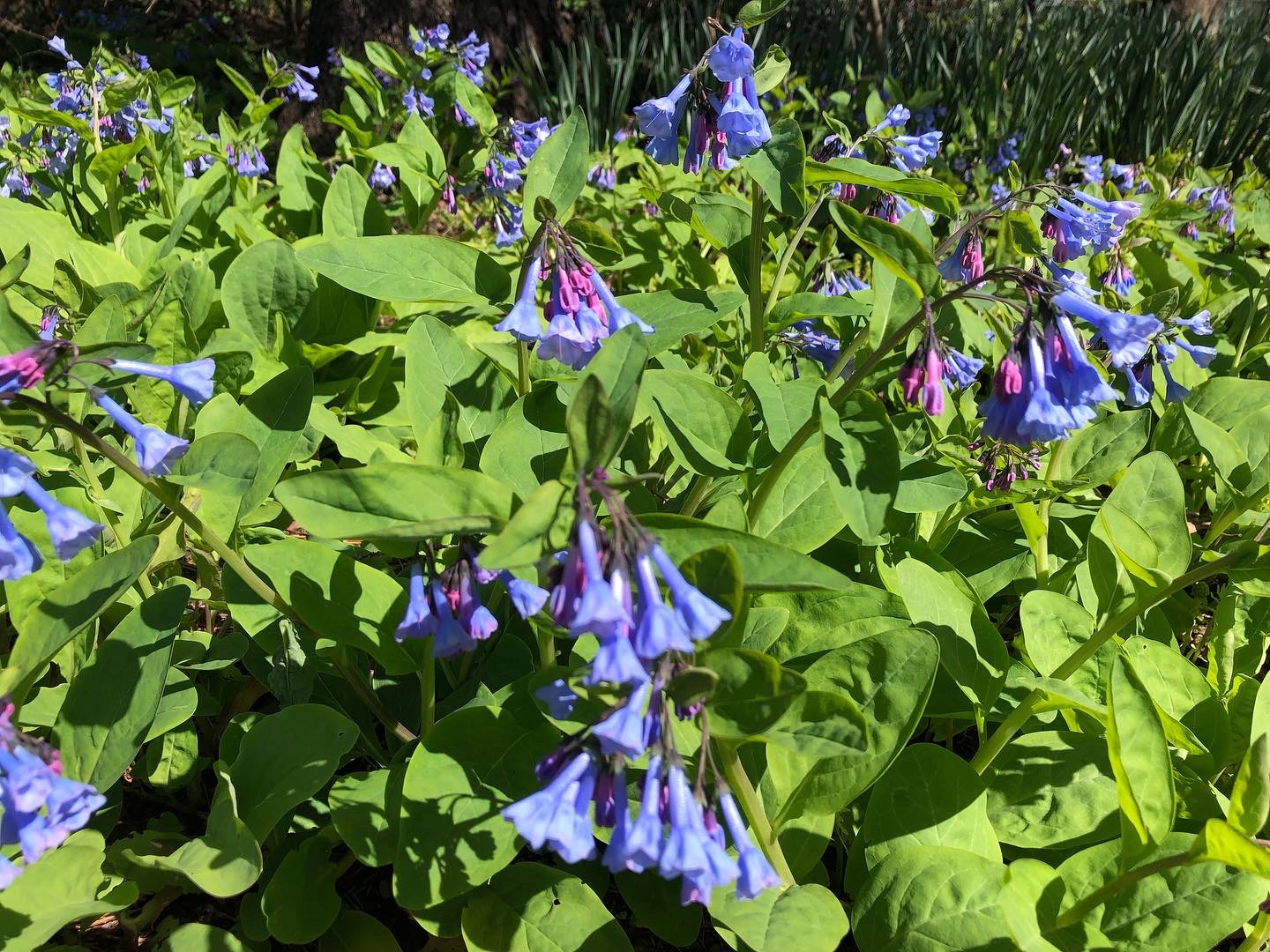
Unfortunately, bluebells are considered threatened in its native range due to habitat destruction and flooding. Photo: C. Boeckmann
2. Dutchman’s breeches (Dicentra cucullaria) look just like white pantaloons hanging upside-down to dry. They are also called soldier’s cap or butterfly banners and are related to bleeding hearts. The upside-down blossoms protect the pollen from wind and rain. Only the female bumblebees with her long tongue, can reach the nectar deep inside the long spurs and pollinate the flower in the process.
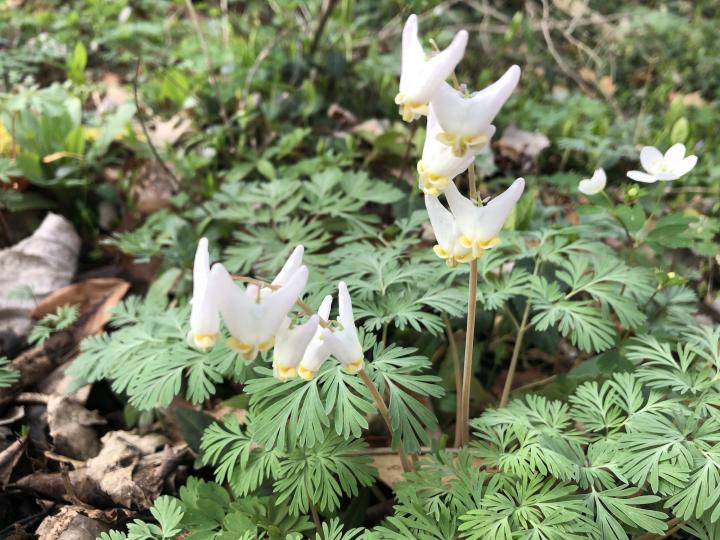 Dutchman’s Breeches. Credit: Catherine Boeckmann
Dutchman’s Breeches. Credit: Catherine Boeckmann
3. Bloodroot (Sanguinaria canadensis) has pure white flowers with leaves that wrap around the stem and bud, trapping warm air. Bloodroot gets its name from the red sap the leaves, stems, and roots exude when broken.
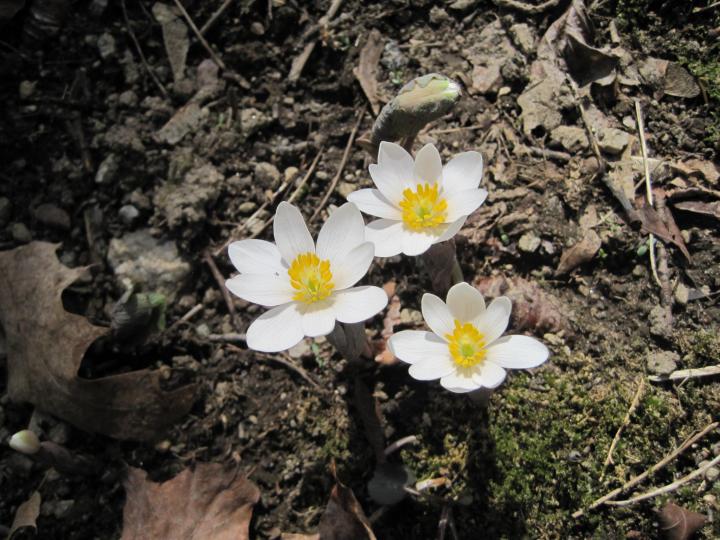
The petals appear before the leaves unfurl and at night they close up to protect the center from rain or frost.
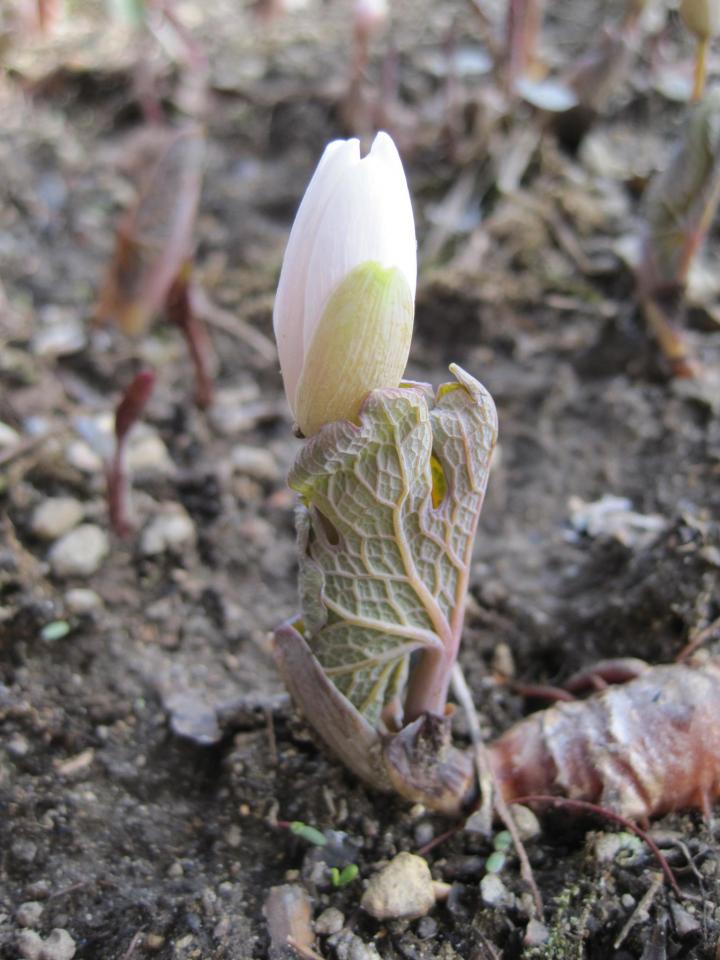
4. Eastern spring beauty (Claytonia virginica). The light pink Spring Beauties below have 5-petaled flowers with dark pink veins and long, succulent leaves.
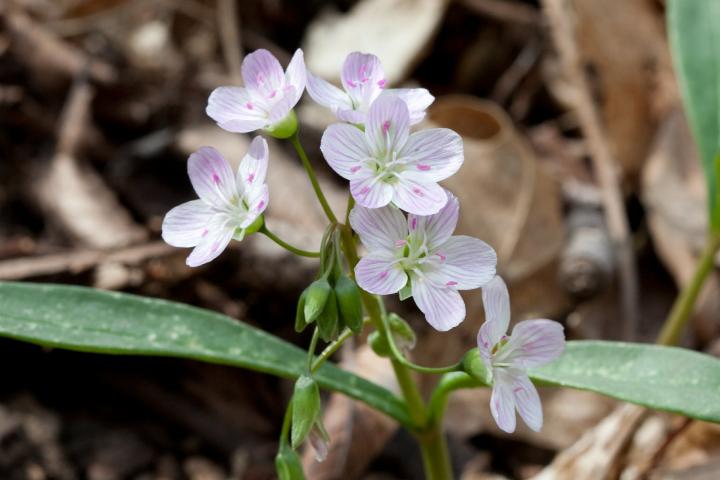
5. Trout lily (Erythronium americanum) is the earliest blooming lily, bearing small yellow trumpets with recurved petals. The purple splotches on its leaves resemble the markings on a brook trout, giving it its name.
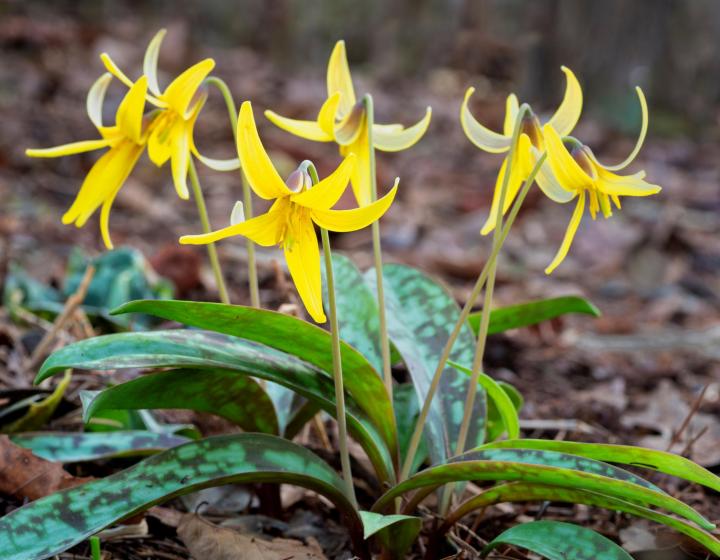 Trout Lily. Credit: Gerry Bishop.
Trout Lily. Credit: Gerry Bishop.
6. Red trillium (Trillium erectum) are all about threes. The plant has three heart-shaped leaves, three large red petals, and three green sepals. This has earned it the name trinity flower, but it goes by many common names including stinking Benjamin for its repulsive odor of rotting flesh meant to attract the flies that pollinate it and wake robin since it usually blooms around the time the robins return.
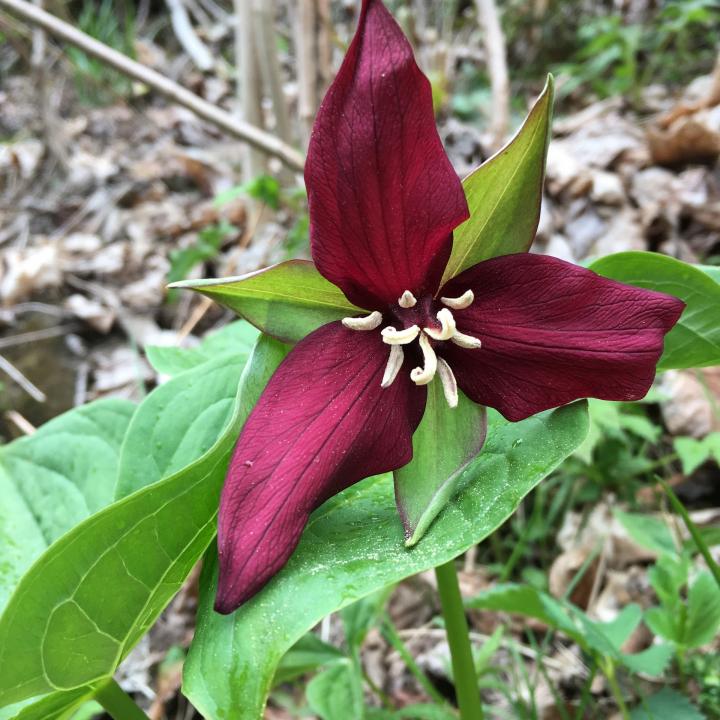
7. Starflower (Trientalis borealis) is a plant of sevens - seven leaves, seven petals, seven stamens, and even seven seeds in each capsule. These bright white flowers spread by underground runners and will form a nice carpet if undisturbed.
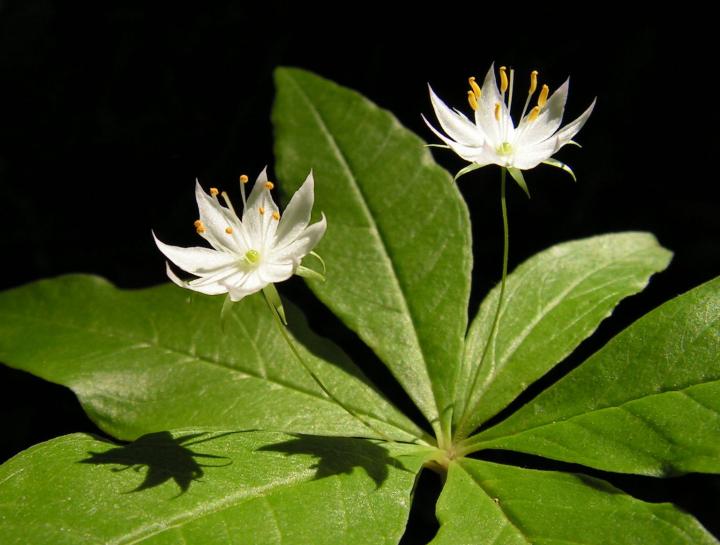 Starflower. Credit: Matthieu Gauvain
Starflower. Credit: Matthieu Gauvain
8. Wood anemones (Anemone quinquefolia) have a pliable stem that can survive strong winds. Its white blossoms have no nectar or scent and the plant is wind pollinated giving it the common name windflower.
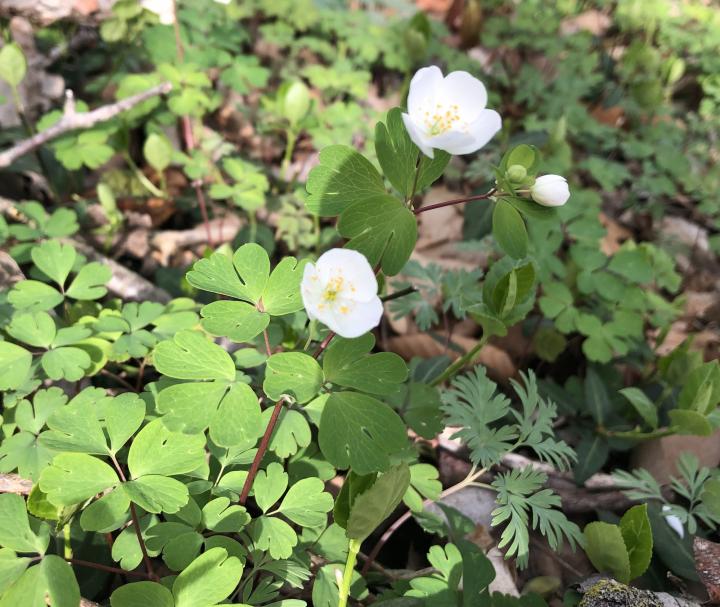 False Rue Anemone. Look for it in rich forests on slopes with nutrient-rich sediment or underlying rocks. Credit: C. Boeckmann.
False Rue Anemone. Look for it in rich forests on slopes with nutrient-rich sediment or underlying rocks. Credit: C. Boeckmann.
9. Round-lobed hepatica (Anemone americana) is an early bloomer; its buds have hairs that act as insulation. It is easy to miss because its tiny flowers appear among last year’s withered leaves. The blossoms can be dark violet, white or a range of pastel colors including pink, lavender, and pale blue. Its flowers are self-fertile and don’t need an insect to pollinate them.
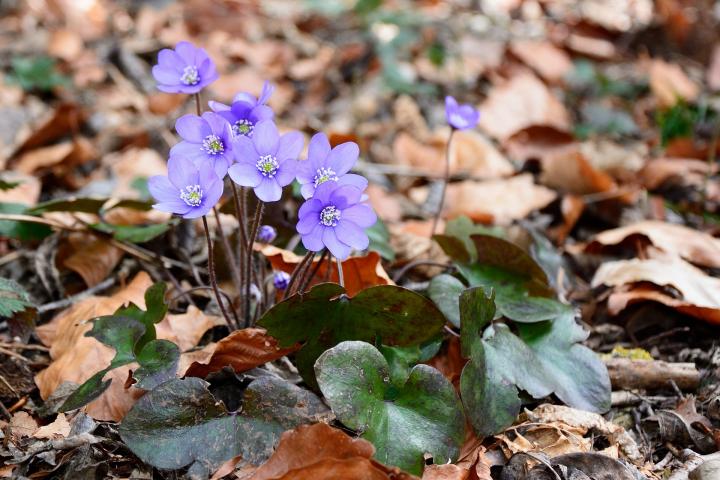
10. Cutleaf Toothwort (Cardamine concatenata) is one of the earlier spring wildflowers of moist forests and woods; the name refers to the tooth-like projections on the underground stems (actually leaf scars from the previous seasons growth). The leaves and rhizomes are edible (with a spicy flavor inspiring the common name of pepper root).
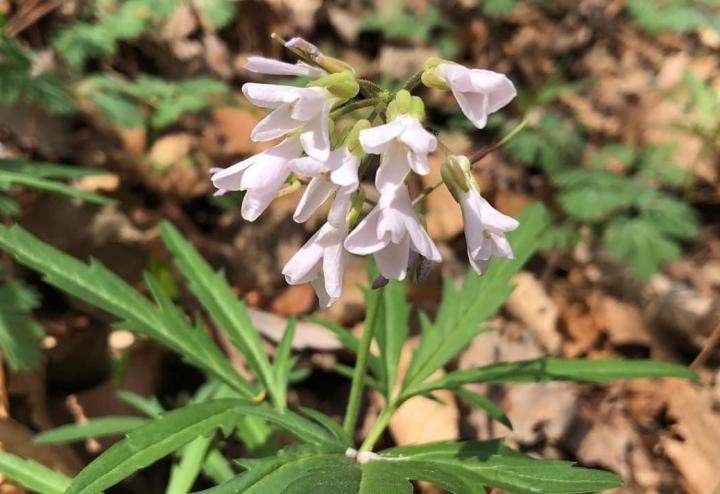 Cutleaf Toothwort plants were used medicinally by indigenous peoples. Photo: C. Boeckmann
Cutleaf Toothwort plants were used medicinally by indigenous peoples. Photo: C. Boeckmann
A Word on Invasives
This brings us to an invasive, non-native species which you’ll probably come across: Lesser Celandine. This yellow flower looks pretty and it’s great in its original habitat (on other continents) but it really causes problems in North America, choking out out all other native wildflowers.
The early spring wildflowers are what our native insects need to survive; many of them require a specific plant species, similar to how the monarch needs milkweed. Lesser Celandine out-competes the native wildflowers; when insect populations decline, bird populations decline, and the ecosystem falls apart in the geography. This invasive really causes problems where it’s out of place, spreading very rapidly and far from where originally planted, especially when rivers wash seed down from locations upstream.
Don’t be fooled. Lesser Celandine sees to “disappear” in a few weeks, however, this invasive is working underground to spread so next year it will infest a bigger area. If you just see a handful, the best action is to dig it up right away! Don’t just pull the flower or leaves. You need to dig out the entire root and bulbils attached to the plant or it will return. If you have large amounts, we’re afraid the only solution is to spray with a glyphosate-based herbicide every year (which is what’s done at our local parks); it can only be sprayed in uplands and terraces, not floodways or near water where it’s essentially uncontrollable. Talk to your local park or garden center.
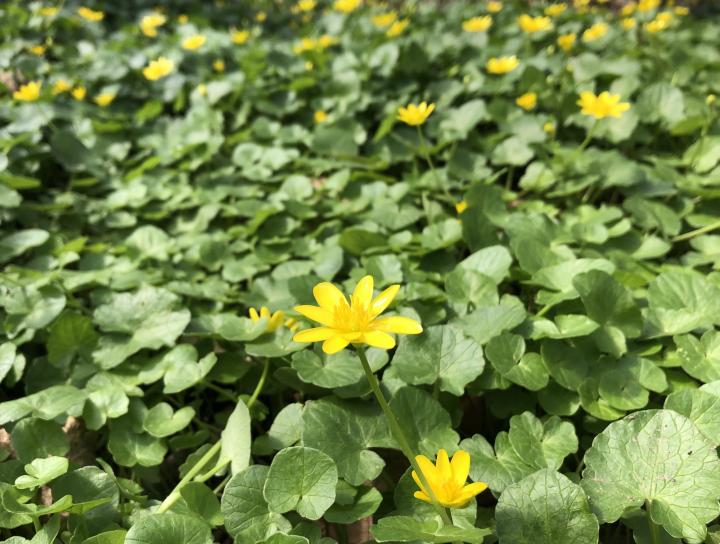 Lesser Celandine is an invasive, non-native that outcompetes native spring-blooming ephermerals. Credit: C. Boeckmann
Lesser Celandine is an invasive, non-native that outcompetes native spring-blooming ephermerals. Credit: C. Boeckmann
Now, let’s back to our lovely wildflowers! Enjoy them in their natural surroundings. Never dig them up and try to transplant them into your own garden. Many species, like trout lilies, take upwards of 8 years to flower.
Just enjoy a walk in the woods and the chance to see these wildflowers during the few short weeks that they flower. As the name “ephemeral” suggests, their beauty is fleeting.
Love wildflowers? See how to grow wildflowers in your yard!



 Dutchman’s Breeches. Credit: Catherine Boeckmann
Dutchman’s Breeches. Credit: Catherine Boeckmann


 Trout Lily. Credit: Gerry Bishop.
Trout Lily. Credit: Gerry Bishop.
 Starflower. Credit:
Starflower. Credit:  False Rue Anemone. Look for it in rich forests on slopes with nutrient-rich sediment or underlying rocks. Credit: C. Boeckmann.
False Rue Anemone. Look for it in rich forests on slopes with nutrient-rich sediment or underlying rocks. Credit: C. Boeckmann.
 Cutleaf Toothwort plants were used medicinally by indigenous peoples. Photo: C. Boeckmann
Cutleaf Toothwort plants were used medicinally by indigenous peoples. Photo: C. Boeckmann Lesser Celandine is an invasive, non-native that outcompetes native spring-blooming ephermerals. Credit: C. Boeckmann
Lesser Celandine is an invasive, non-native that outcompetes native spring-blooming ephermerals. Credit: C. Boeckmann






